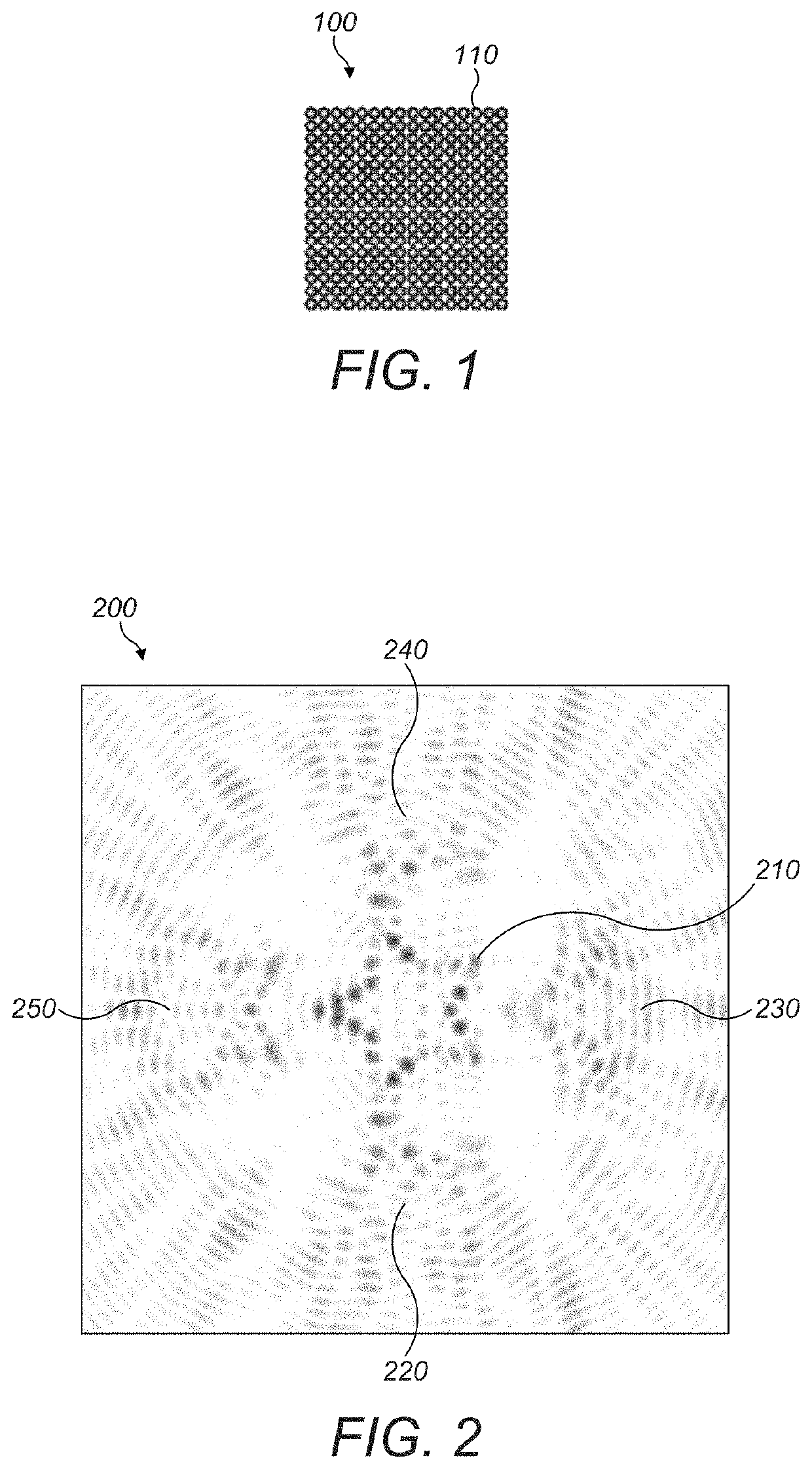Calibration techniques in haptic systems
a technology of haptic systems and calibration techniques, applied in the field of improved calibration techniques of hapticbased systems, can solve the problems of time-consuming, prone to human error, and inability to achieve ideal configurations,
- Summary
- Abstract
- Description
- Claims
- Application Information
AI Technical Summary
Benefits of technology
Problems solved by technology
Method used
Image
Examples
Embodiment Construction
[0037]Described herein are certain techniques to enhance calibration techniques in haptic systems. Some or all of these techniques may be used at the same time or one after the other in order to improve such calibration.
I. ARRAY CONFIGURATIONS TO REDUCE SECONDARY MAXIMA
[0038]An acoustic field may be controlled by defining one or more control points in space. Each control point can be assigned a value equating to a desired amplitude at that control point. A physical set of transducers may then be controlled to create an acoustic field exhibiting the desired amplitude at the control points.
[0039]Because complete control of space is not possible, controlling the acoustic field at given points may yield erroneous local maxima in the acoustic field levels at other related positions. In relation to mid-air haptic feedback, these can interfere in interactions with the space by creating secondary effects and ghost phenomena that can be felt outside the interaction area.
[0040]The level and n...
PUM
 Login to View More
Login to View More Abstract
Description
Claims
Application Information
 Login to View More
Login to View More - R&D
- Intellectual Property
- Life Sciences
- Materials
- Tech Scout
- Unparalleled Data Quality
- Higher Quality Content
- 60% Fewer Hallucinations
Browse by: Latest US Patents, China's latest patents, Technical Efficacy Thesaurus, Application Domain, Technology Topic, Popular Technical Reports.
© 2025 PatSnap. All rights reserved.Legal|Privacy policy|Modern Slavery Act Transparency Statement|Sitemap|About US| Contact US: help@patsnap.com



